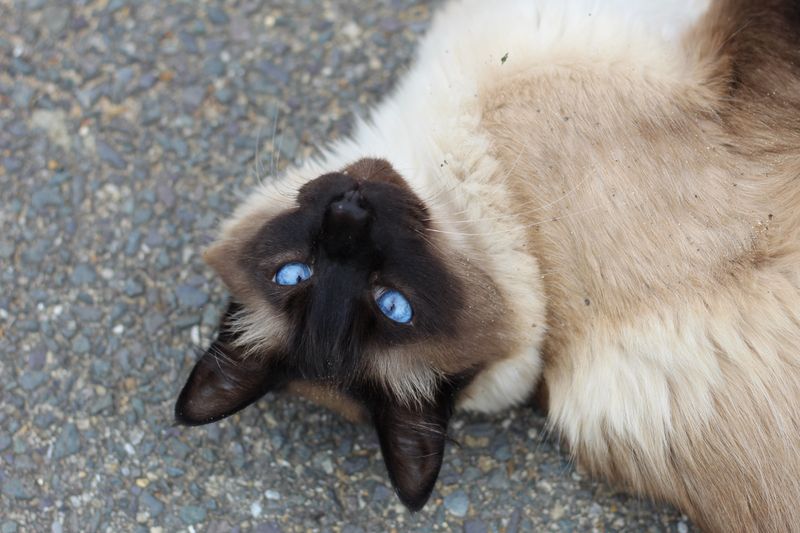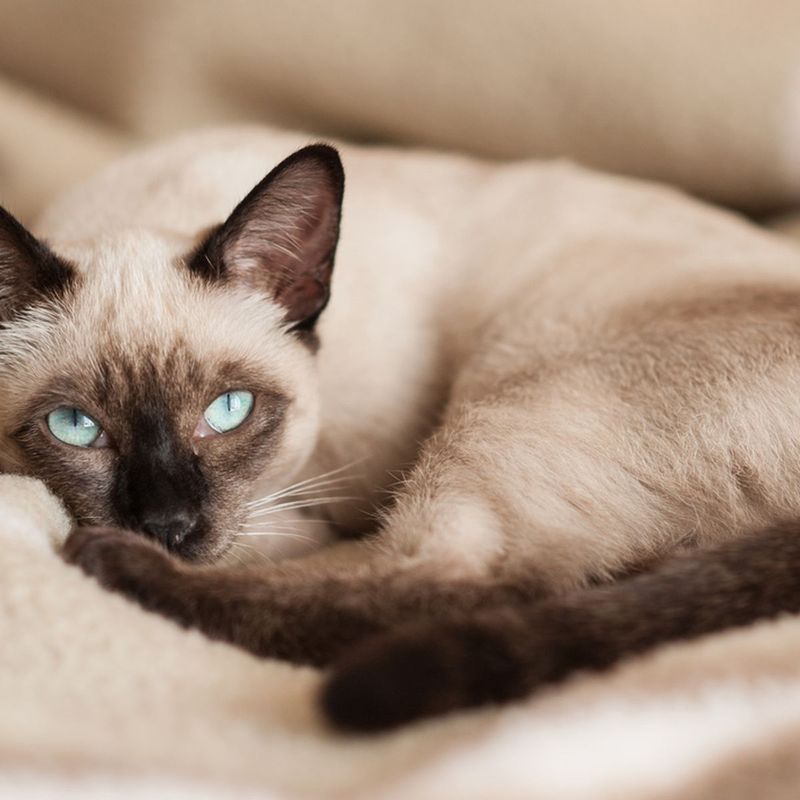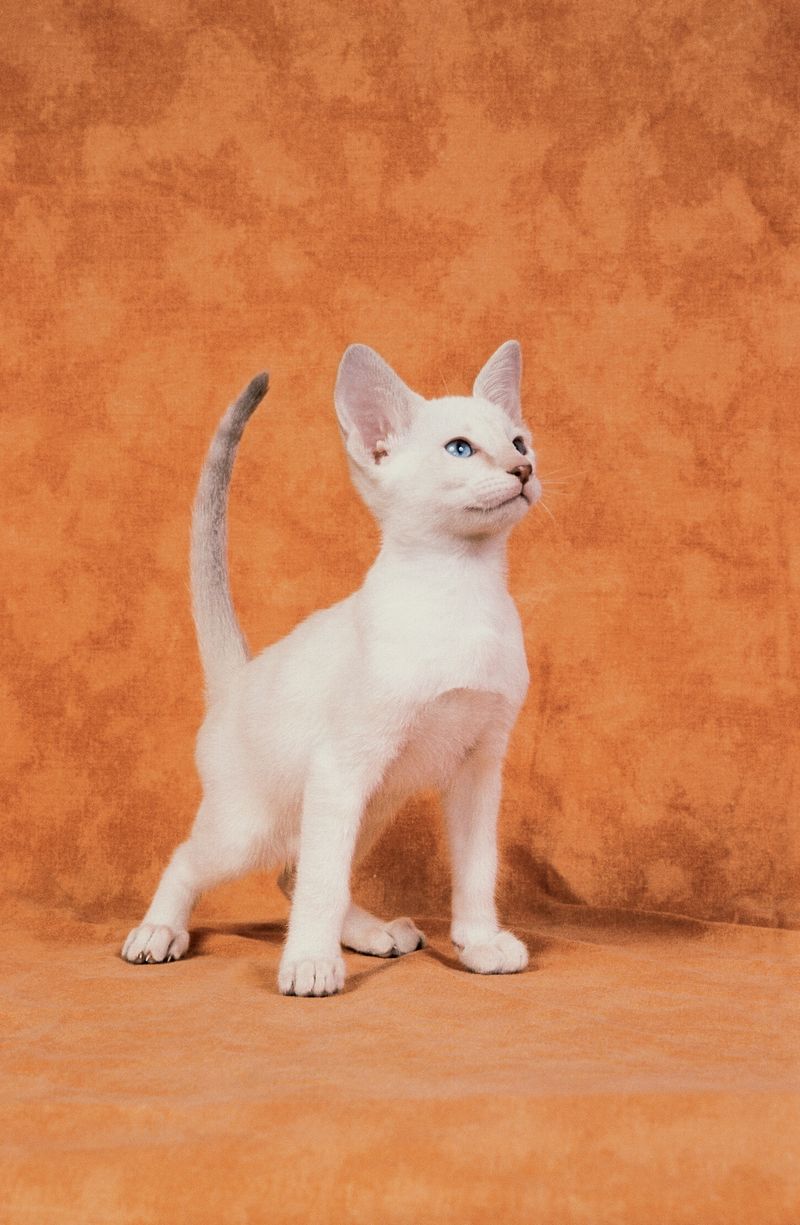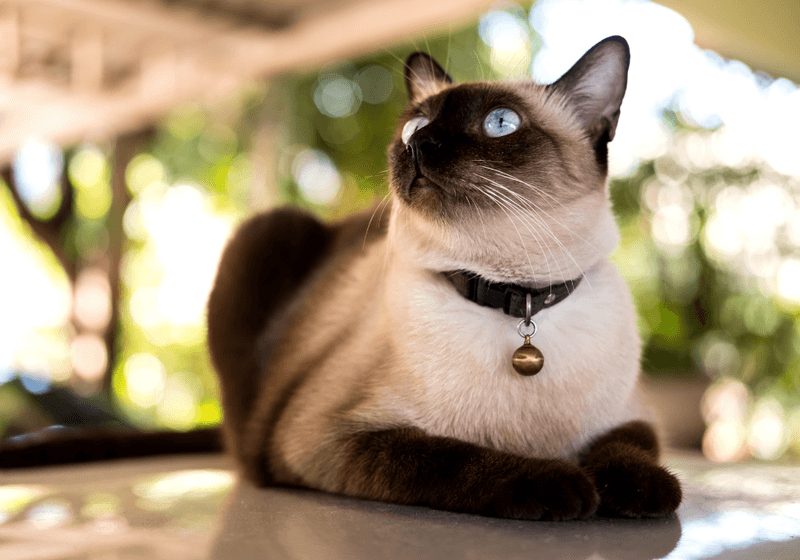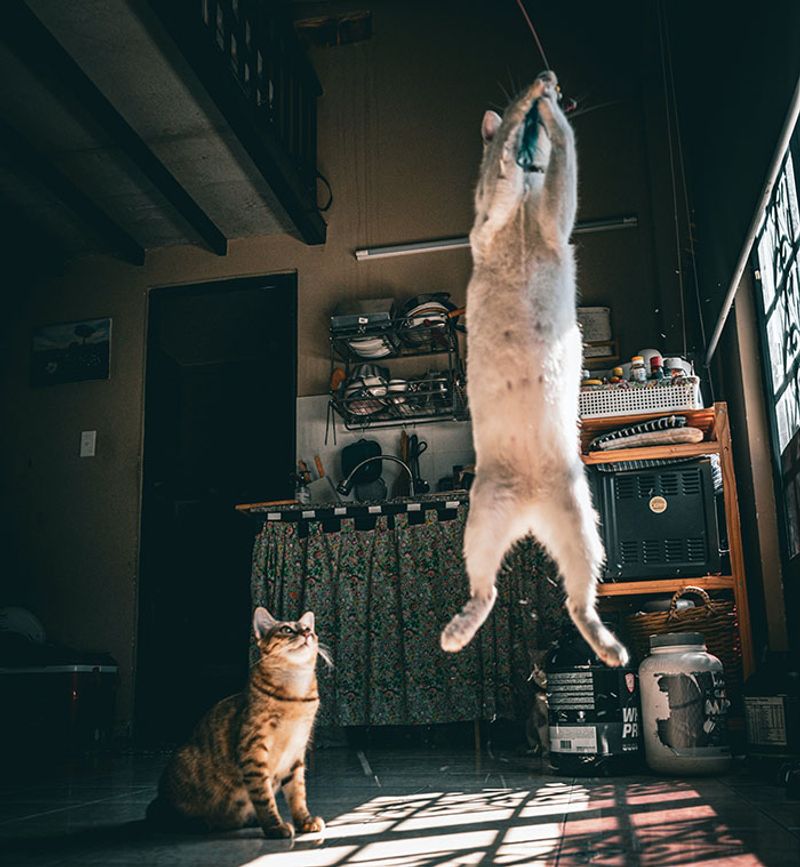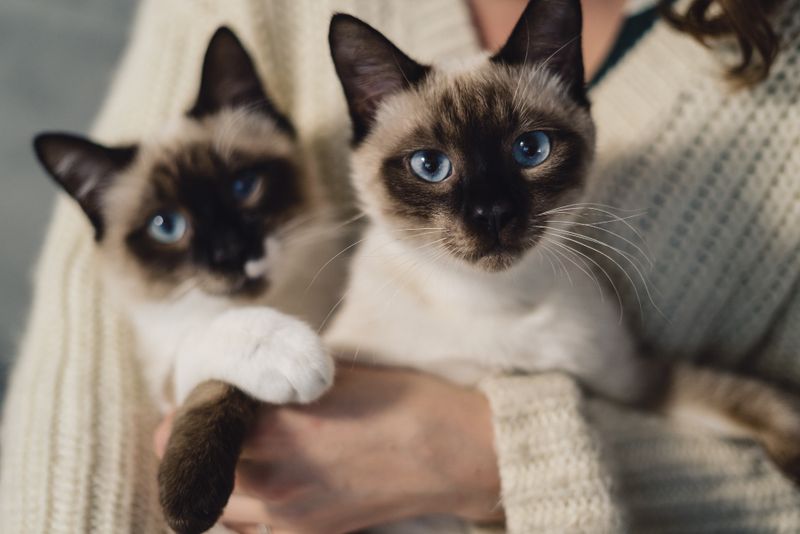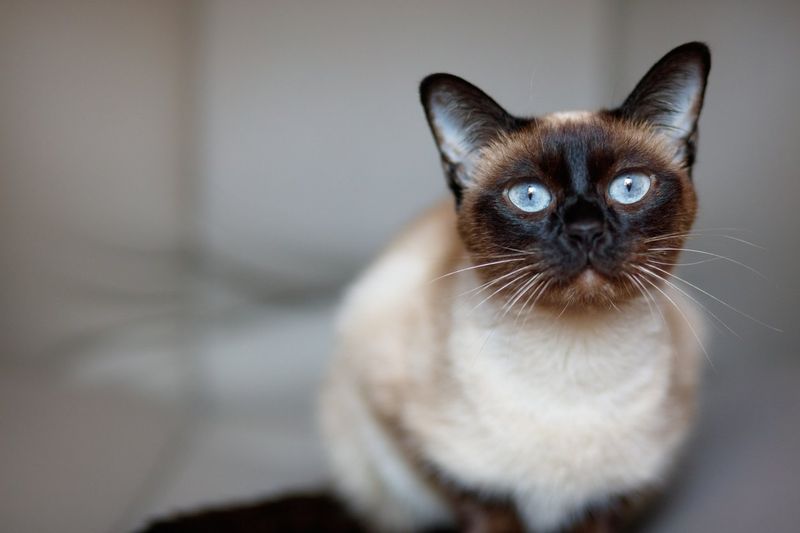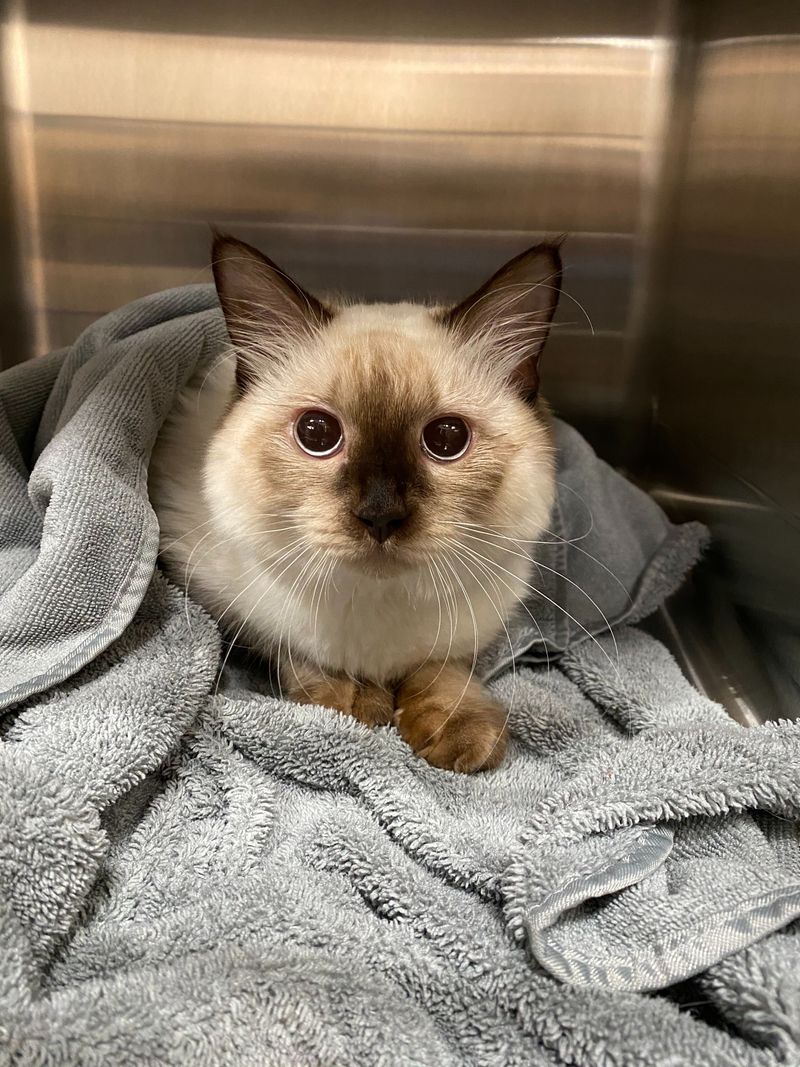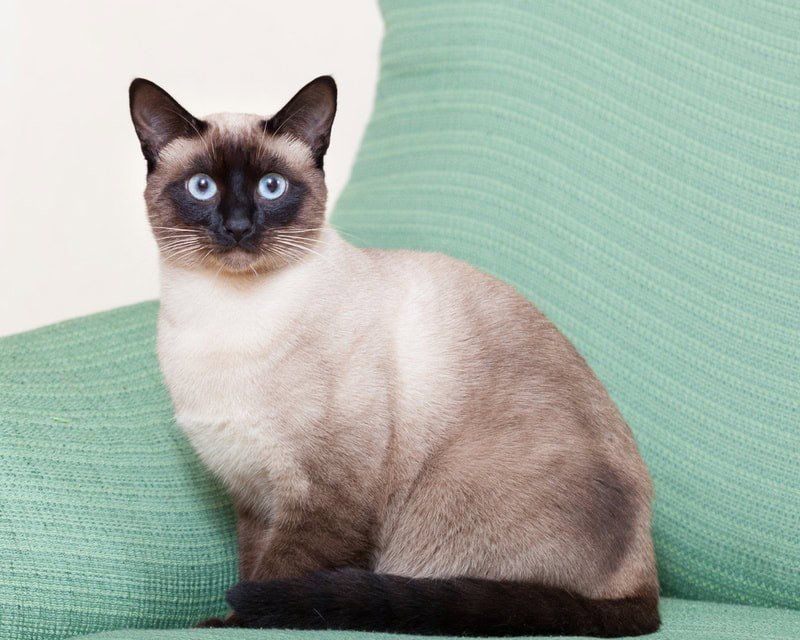📖 Table of Content:
- 1. They’re Incredibly Vocal
- 2. They Demand Your Attention
- 3. Their Coat Colors Change Over Time
- 4. They’re Highly Intelligent Problem-Solvers
- 5. They’re Surprisingly Athletic
- 6. They Form Intense Bonds With Their People
- 7. They’re Prone to Certain Health Issues
- 8. They Have Strong Temperature Preferences
- 9. They Live Remarkably Long Lives
Siamese cats are instantly recognizable for their piercing blue eyes and elegant color-point coats. Their sleek appearance and charismatic presence have made them one of the most adored cat breeds worldwide. However, behind that beauty lies a personality as bold as their looks.
Known for their vocal nature and strong social instincts, Siamese cats demand more interaction than the average feline. Their intelligence often leads them to seek mental stimulation and companionship, making them less suited for homes where they’ll be left alone for long periods. These traits can delight or overwhelm, depending on what an owner is prepared for.
What many don’t expect is just how complex and intense Siamese cats can be. Their quirks, habits, and emotional depth often surprise even seasoned cat lovers. Gaining a full understanding of their needs is key to building a successful and lasting bond.
1. They’re Incredibly Vocal
Siamese cats don’t just meow occasionally—they hold full conversations! Many new owners are stunned by how much these cats vocalize. Their distinctive yowls, chirps, and loud meows can fill your home from dawn till dusk.
Unlike most cats who might meow when hungry, Siamese cats chat about everything: their day, their feelings, or simply demanding your attention. Some describe their voices as similar to a baby crying.
Be prepared for 2 AM serenades and mealtime symphonies. If you value complete silence or have noise-sensitive neighbors in thin-walled apartments, this talkative trait might be overwhelming.
2. They Demand Your Attention
Forget the stereotype of aloof, independent cats. Siamese are more like dogs in their need for companionship. They’ll follow you everywhere—bathroom included—and insert themselves into every activity from cooking to video calls.
Alone time becomes a foreign concept with these social butterflies. Many Siamese owners report their cats developing separation anxiety when left alone for extended periods. Your cat might wait by the door until you return, expressing displeasure at your absence.
Working long hours? Consider adopting two Siamese so they can keep each other company, or your furniture might suffer the consequences of a bored, lonely cat.
3. Their Coat Colors Change Over Time
The magical color transformation of Siamese kittens surprises many first-time owners. Born almost completely white, these kittens gradually develop their distinctive darker points on ears, face, paws, and tail as they mature.
This color-changing phenomenon happens because Siamese cats carry a temperature-sensitive enzyme that affects pigment production. The cooler parts of their bodies develop darker fur, while warmer areas stay lighter.
Temperature affects their appearance throughout life. During winter months, your Siamese might darken significantly, while summer brings a lighter coat. Even illness or injury can cause temporary color changes, making your cat’s appearance an ongoing visual journey.
4. They’re Highly Intelligent Problem-Solvers
Siamese cats possess remarkable brainpower that both delights and challenges their owners. These clever felines quickly learn to open doors, cabinets, and even refrigerators. Child-proof locks become mere puzzles for their nimble paws.
Their intelligence requires mental stimulation to prevent boredom and mischief. Puzzle feeders, training sessions, and interactive toys become necessities rather than luxuries. Many Siamese can learn tricks like fetching, high-fiving, or coming when called.
This intelligence has a downside—Siamese notice everything and adapt quickly. They’ll observe your routine and find ways to manipulate you, whether it’s for extra treats or attention at specific times.
5. They’re Surprisingly Athletic
Behind that elegant exterior lies an athlete waiting to pounce. Siamese cats can leap astonishing heights—easily clearing refrigerators or bookshelves in a single bound. Their slender, muscular build makes them natural acrobats.
Vertical space becomes crucial in a Siamese home. Cat trees, shelves, and climbing opportunities help satisfy their need to survey their domain from above. Without proper outlets, they’ll find their own—often using curtains as a climbing apparatus.
Their playful energy remains well into adulthood. Even senior Siamese often retain kitten-like playfulness, zooming through the house in sudden bursts of energy. Be ready for a cat that might still chase toys and play tag at age 15.
6. They Form Intense Bonds With Their People
Siamese cats don’t just love their owners—they form deep, almost obsessive attachments. These devoted felines often choose one family member as their special person, following them with unwavering loyalty.
Their emotional sensitivity means they can sense your moods and often provide comfort during difficult times. Many owners report their Siamese curling up with them when they’re sick or sad. This sensitivity also means they can become stressed when their humans are upset.
The flip side? Siamese can become jealous of other pets or even people who take attention away from them. New relationships, babies, or additional pets require careful introduction to avoid hurt feline feelings.
7. They’re Prone to Certain Health Issues
Beyond their striking beauty lies a genetic predisposition to certain health concerns. Respiratory issues plague many Siamese due to their distinctive head shape. Their breathing might sound raspy or congested, especially during sleep or exercise.
Dental problems frequently affect this breed. Their narrow jaw structure can lead to overcrowded teeth and gum disease, requiring regular dental care. Crossed eyes and kinked tails, once common traits, have been mostly bred out but still appear occasionally.
More seriously, Siamese face higher risks of progressive retinal atrophy, heart problems, and certain cancers. Regular veterinary care becomes essential, not optional, making ownership potentially more expensive than with other breeds.
8. They Have Strong Temperature Preferences
Cold weather sends Siamese cats on desperate searches for warmth. Their short, fine coats provide minimal insulation, making them particularly sensitive to temperature drops. You’ll find them curled against radiators, burrowed under blankets, or stealing your body heat while you sleep.
Many Siamese owners discover their cats lounging in sunbeams, on laptop keyboards, or atop warm appliances. This heat-seeking behavior isn’t just a preference—it’s a necessity for their comfort.
Prepare to adjust your thermostat during winter months or invest in heated cat beds. Some Siamese even appreciate cat-sized sweaters during cold snaps, though not all tolerate wearing clothes. Their temperature sensitivity means they’re generally indoor cats in all but the mildest climates.
9. They Live Remarkably Long Lives
Committing to a Siamese means preparing for a long-term relationship. While many cats live 12-15 years, Siamese routinely reach their late teens and even early twenties with proper care. This longevity exceeds most dog breeds and even some other cat breeds.
Their extended lifespan means more years of companionship but also requires planning for their senior care. Many owners face a decade or more of managing age-related conditions like arthritis, kidney disease, or cognitive changes.
Consider your future circumstances before adopting. Will you be able to provide care if your cat lives 20+ years? This extended commitment affects everything from housing choices to travel plans, making Siamese ownership a truly significant life decision.

